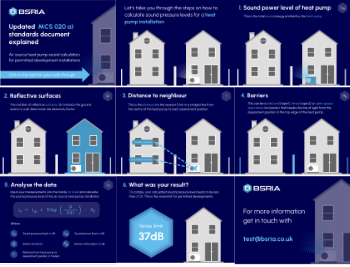Building envelope
According to Approved Document L2B: conservation of fuel and power in existing buildings other than dwellings, the term 'building envelope' refers to:
| ...the walls, floor, roof, windows, doors, roof windows and roof lights. |
Together, these form the physical separation between the interior and exterior, that is, the climatic modifier that creates and contains the internal conditions.
The nature of the building envelope is likely to depend on a wide range of requirements, some of which may be in conflict:
- The type of building.
- Its location and context.
- Its form.
- Regulatory requirements.
- Local climatic conditions.
- The internal conditions required.
- The need for openings, views, security, safety, access, privacy and so on.
- Available materials.
- Structural requirements.
- Building services strategy,
- Sustainability requirements.
- Maintenance and cleaning requirements.
- Rainwater run off.
- Durability, flexibility and expected life.
- The method of construction, deconstructability and recyclability.
- Stylistic requirements.
- Budgetary and time constraints.
NB According to Approved Document L1A:
| The envelope area of a terraced house includes the party wall(s). The envelope area of a flat in a mulit-storey building includes the floors, walls and ceilings which are shared with adjacent flats. |
And, in relation to air permeability:
| The envelope area, or measured part of the building, is the total area of all floors, walls and ceilings bordering the internal volume that is the subject of the pressure test. This includes walls and floors below external ground level. Overall internal dimensions are used to calculate this envelope area and no subtractions are made for the area of the junctions of internal walls, floors and ceilings with exterior walls, floors and ceilings. |
National Calculation Methodology (NCM) modelling guide (for buildings other than dwellings in England) 2013 edition, published by the Department for Communities and Local Government (DCLG), defines ‘envelope area’ as:
|
Area of vertical envelopes (walls) = h * w, where: h = floor to floor height, ie including floor void, ceiling void and floor slab. For top floors, h is the height from floor to the average height of the structural ceiling. w = horizontal dimension of wall. Limits for that horizontal dimension are defined by type of adjacent walls. If the adjacent wall is external, the limit will be the internal side of the adjacent wall. If the adjacent wall is internal, the limit will be half-way through its thickness. NB: Areas of floor, ceilings, and flat roofs are calculated in the same manner as the zone area. Area for an exposed pitched roof (i.e., without an internal horizontal ceiling) will be the inner pitched surface area of the roof. |
Energy Efficiency and Historic Buildings, How to Improve Energy Efficiency, Published by Historic England in 2018, defines the building envelope as:
| The weathertight skin separating the interior of a building from its external environment. It is made up of the roof, walls, windows, doors, floors and foundations; and systems for controlling and disposing of water, including rainwater goods, roof coverings, damp-proof courses and drains). |
[edit] Related articles on Designing Buildings
Featured articles and news
Gregor Harvie argues that AI is state-sanctioned theft of IP.
Using technology to empower communities
The Community data platform; capturing the DNA of a place and fostering participation, for better design.
Heat pump and wind turbine sound calculations for PDRs
MCS publish updated sound calculation standards for permitted development installations.
Homes England creates largest housing-led site in the North
Successful, 34 hectare land acquisition with the residential allocation now completed.
Scottish apprenticeship training proposals
General support although better accountability and transparency is sought.
The history of building regulations
A story of belated action in response to crisis.
Moisture, fire safety and emerging trends in living walls
How wet is your wall?
Current policy explained and newly published consultation by the UK and Welsh Governments.
British architecture 1919–39. Book review.
Conservation of listed prefabs in Moseley.
Energy industry calls for urgent reform.
Heritage staff wellbeing at work survey.
A five minute introduction.
50th Golden anniversary ECA Edmundson apprentice award
Showcasing the very best electrotechnical and engineering services for half a century.
Welsh government consults on HRBs and reg changes
Seeking feedback on a new regulatory regime and a broad range of issues.
CIOB Client Guide (2nd edition) March 2025
Free download covering statutory dutyholder roles under the Building Safety Act and much more.























